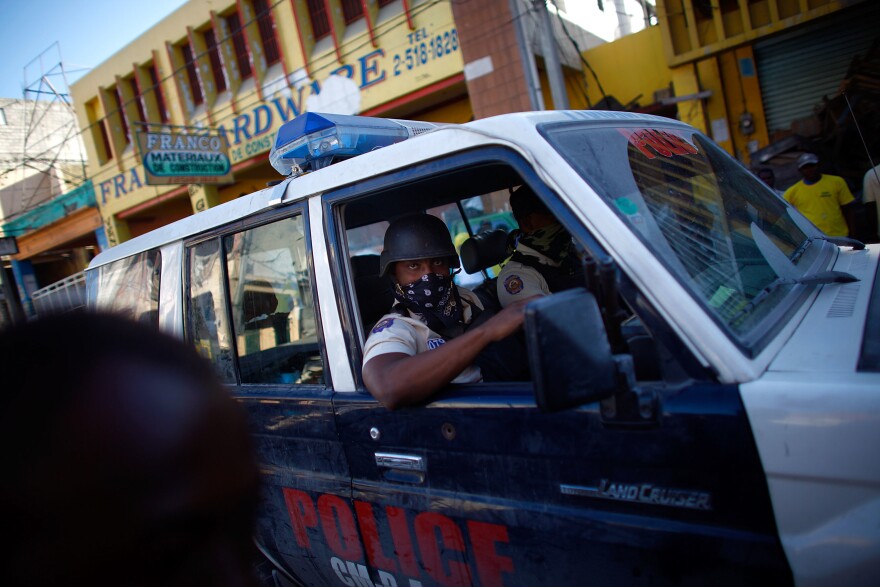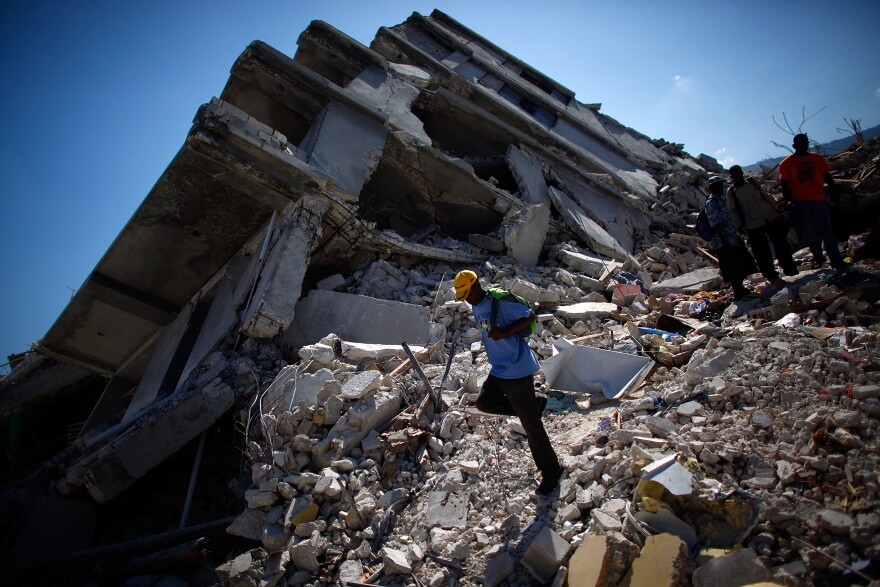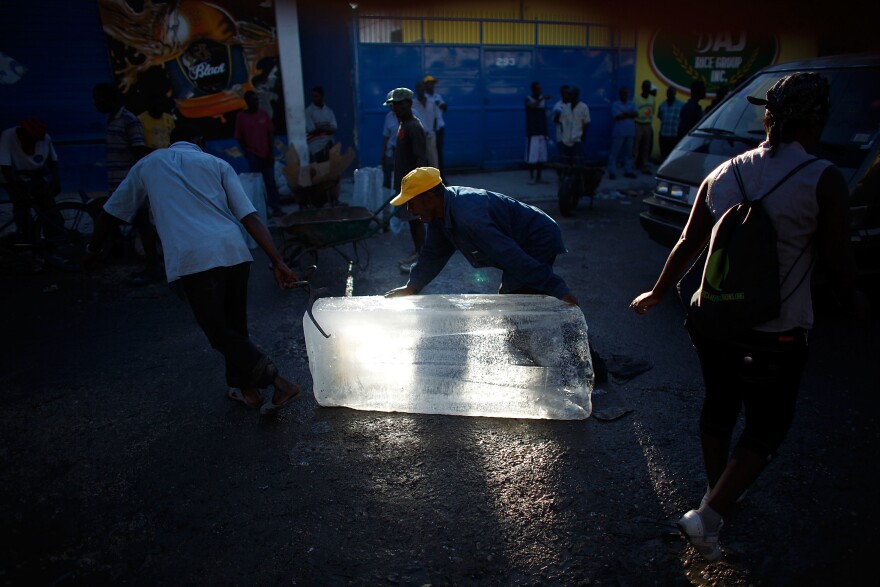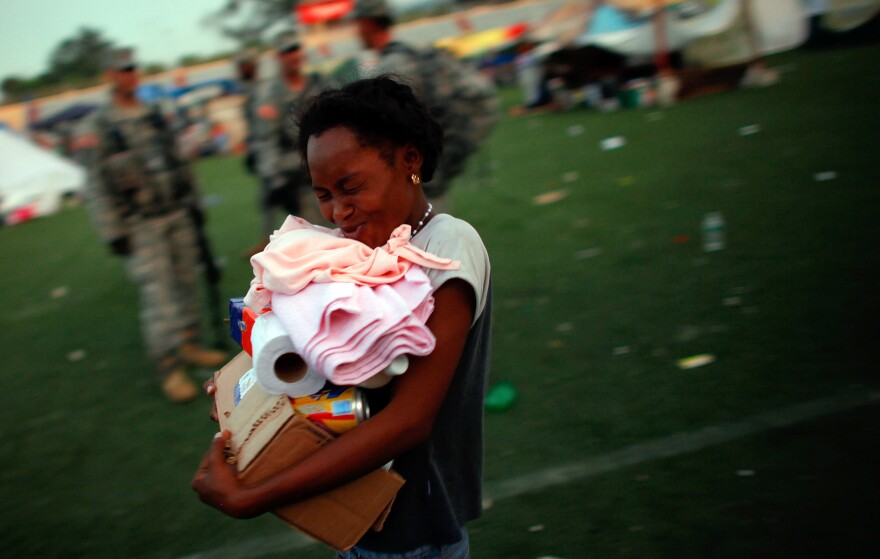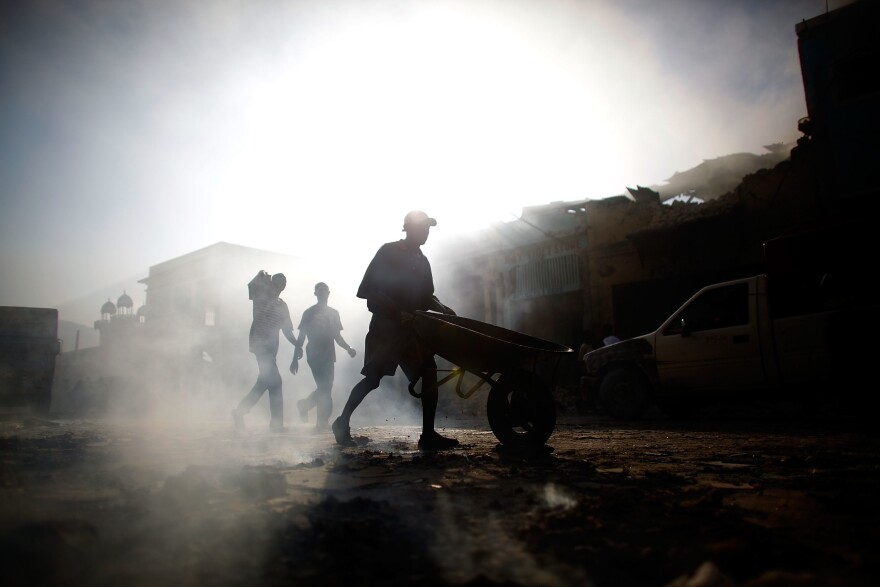Editor's note: This story contains images that some readers may find disturbing.
The magnitude 7.0 earthquake that hit Haiti in Jan. 12, 2010, left 220,000 people dead, 300,000 injured and rubble nearly everywhere.
NPR photographer David Gilkey and correspondent Jason Beaubien were among those who rushed to Haiti immediately after the quake to report on rescue and recovery efforts, medical care for the injured, distribution of food and water, and the government's struggle to reestablish essential services. A month after the event, back in the U.S., Beaubien shared his impressions with NPR's Neal Conan. Their discussion has been edited for length and clarity.

CONAN: You reached Haiti the day after the earthquake.
BEAUBIEN: It was actually — took one whole day after the earthquake to get in, and then on Thursday, our photographer David Gilkey and I drove in from Santo Domingo in the Dominican Republic.
CONAN: And what did you see after you crossed the border?
BEAUBIEN: What was really striking was you came across the border, and things looked fairly normal in Haiti. And in Dominican Republic, which, obviously, shares that island, you weren't seeing really any damage at all on that side. And you weren't seeing much damage until you really got to the outskirts of Port-au-Prince. And then as you get closer and closer into the heart of the city, things just got worse and worse and worse. And as we were coming in, there were people fleeing out. You saw people leaving, people trying to get out of the city.

But it was amazing how, as you penetrated deeper into the city, the damage just got worse. There was more — there were more dead people, the buildings were in worse shape. It was almost as if a bomb went straight to the heart of Port-au-Prince.

CONAN: And that kind of — there's nothing to compare it to.
BEAUBIEN: Really, I mean, I've — I covered Africa for four years. I covered the tsunami. And this story hit me in a way that other stories just haven't, in part because of the concentration of the destruction, the fact that there were so many dead people, there were so many people with nowhere to sleep at night. Everything in the city — in parts of the city, absolutely everything was destroyed. It was really — it was very intense. It was probably the most intense story that I've — I think I've ever covered in my career.
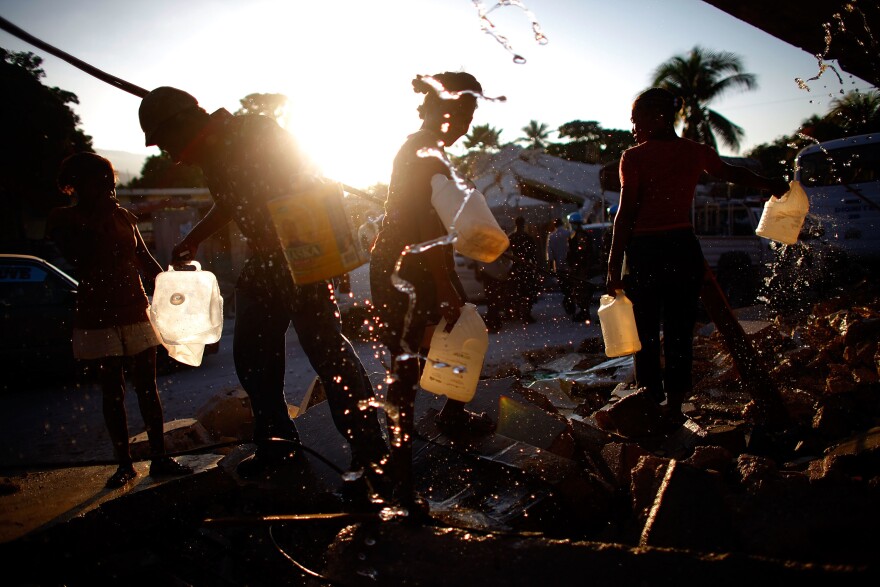
CONAN: And not to belabor a point, but the government in Haiti was not described as efficient before the earthquake, and it's — is it fair to say it's in ruins now?
BEAUBIEN: Certainly, the physical structure of the government is in ruins. Many government officials also died. That week right after the quake, there was this sense of just a country completely adrift, that the U.N. had also really been knocked back on its heels. Its main compound suffered significant damage. The head of the U.N. had died in the actual quake. It was kind of unclear at that point where was President René Préval. There was this sense of a country that had both been devastated, that was in ruins. There were, as I say, dead people everywhere, people sleeping outside and the sense that the country was leaderless.

CONAN: Has that abated since?
BEAUBIEN: I think, to some degree, the Haitian government has come back and made it clear that — they've set up at a police station out by the airport — made it clear that they are going to attempt to lead this effort. Also, the international community has rallied and shown that they're going to try to work on this in a manner of consensus. But you never felt, while I was there in the first two weeks, that there was going to be somebody that people could rally around.

And I went to the funeral of the archbishop. It was actually not the first Sunday, but the second Sunday after the quake. And people chased President René Préval out of that funeral, shouting "Aristide, Aristide." And Aristide is in exile in South Africa at the moment. So there was...
CONAN: The former president.
BEAUBIEN: The former president, Aristide. So this sense that there was great discomfort with Préval and disappointment in how he was leading things.
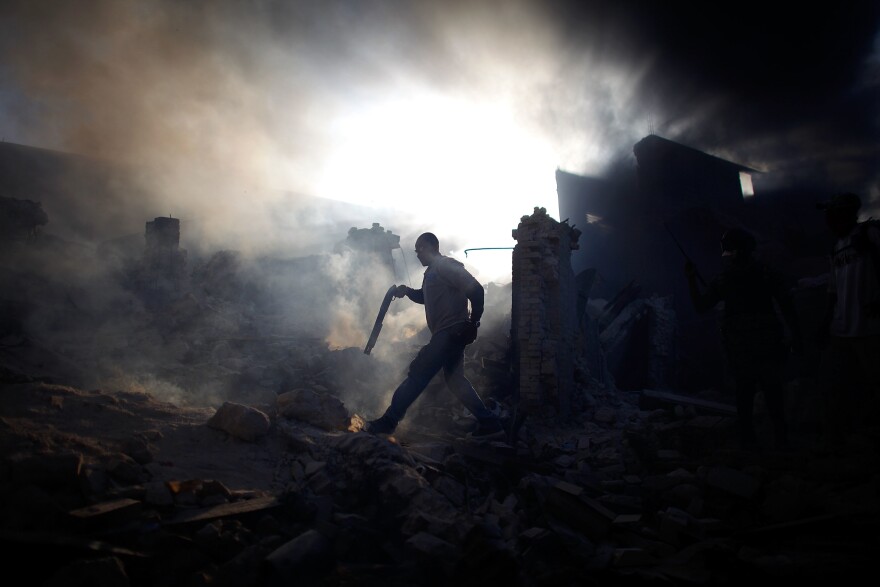
CONAN: The situation for the aid, as it came in, clearly, it came in too slowly.
BEAUBIEN: It came in too slowly, but at the same time, the logistical challenges where huge. And when you're there on the ground, you saw it. Just moving around that city was incredibly difficult. The earthquake had knocked buildings into the streets. The port was extremely damaged and, actually, they were using parts of the port which later they've said they shouldn't have been using.
CONAN: Because it was unsafe.
BEAUBIEN: Because it was unsafe. The airport was down to one runway. The U.S. Air Force had basically taken over control of the airspace over Haiti to try to manage the flights that were coming in and out. So, and a road from Santo Domingo is not normally a road which you get heavy trucks coming over, because the relations between the Dominican Republic and Haiti are just stressed at best of times. And so, basically, you had this city that was both in ruins and cutoff.

CONAN: And you can now expect to be going back to Haiti from time to time, I suspect?
BEAUBIEN: Yeah, in a couple of weeks, I'm going to be heading back.
CONAN: And if there was one thing you could take back with you that would help people, what would it be?

BEAUBIEN: The amazing thing about this disaster was the number of times David Gilkey and I were sharing a vehicle and driving around, a number of times, we turned to each and just said, "How are they going to rebuild from this? How are they going to overcome this? How are you going to feed this people and house people in the days to come when the city is in such ruins?" And it was really overwhelming. And I have to say I don't have some clear answer of what it is, but I think leadership is obviously going to be key.
Photographer David Gilkey was killed on assignment for NPR in Afghanistan on June 5, 2016. contributed to this story
Copyright 2023 NPR. To see more, visit https://www.npr.org.
